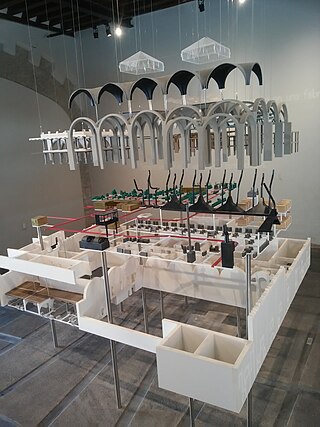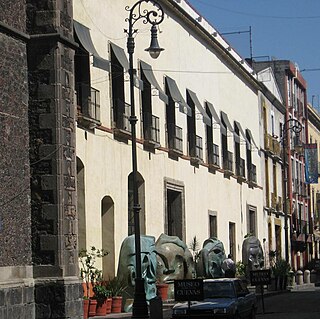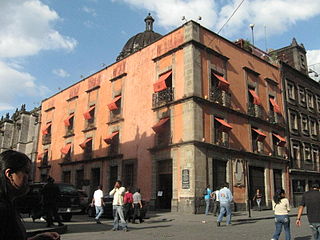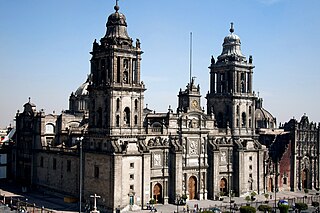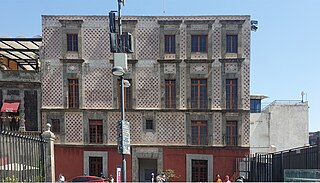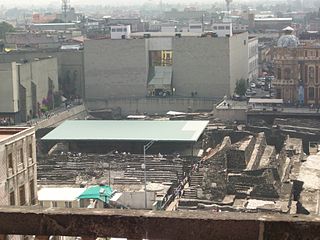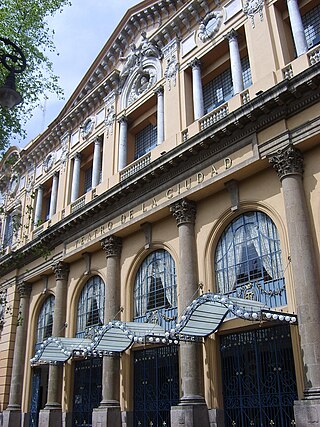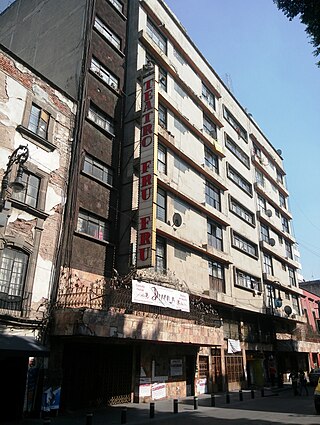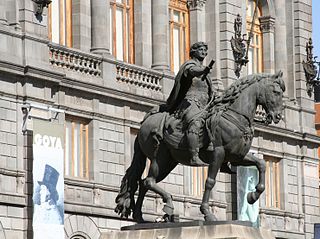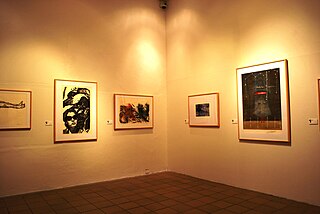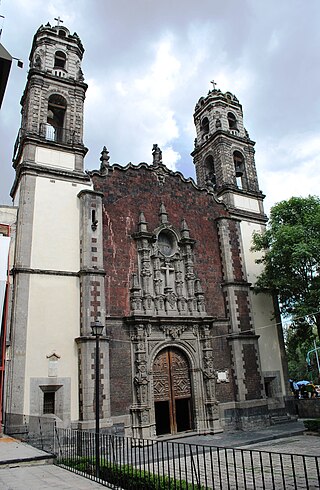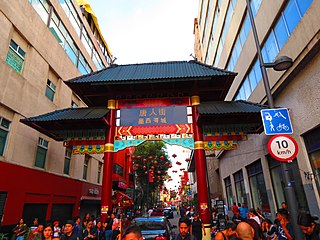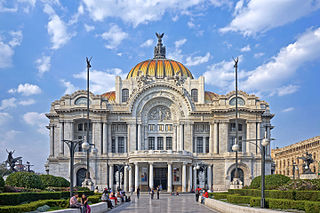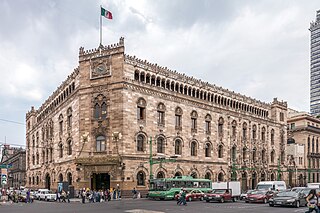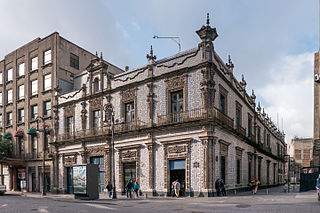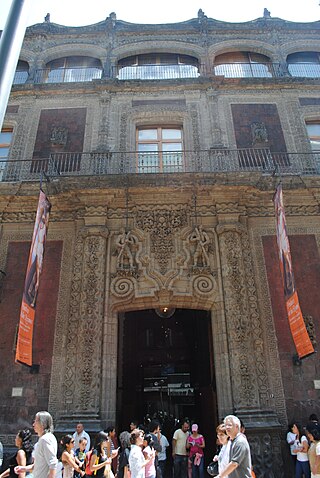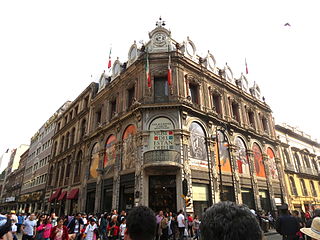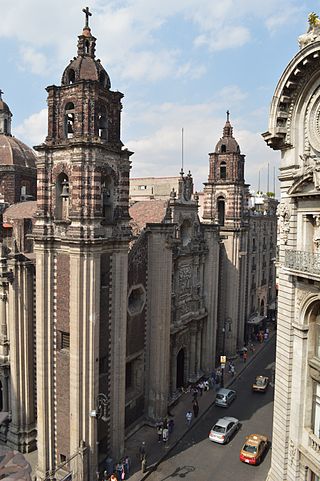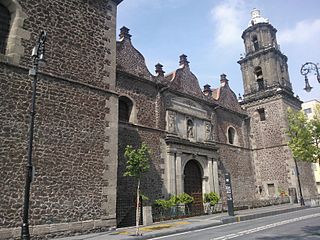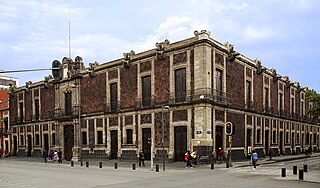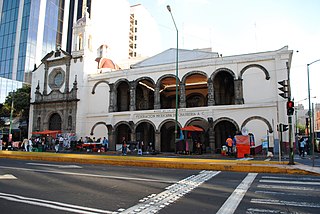Self-guided Sightseeing Tour #4 in Mexico City, Mexico
Legend
Guided Free Walking Tours
Book free guided walking tours in Mexico City.
Guided Sightseeing Tours
Book guided sightseeing tours and activities in Mexico City.
Tour Facts
8.4 km
129 m
Experience Mexico City in Mexico in a whole new way with our free self-guided sightseeing tour. This site not only offers you practical information and insider tips, but also a rich variety of activities and sights you shouldn't miss. Whether you love art and culture, want to explore historical sites or simply want to experience the vibrant atmosphere of a lively city - you'll find everything you need for your personal adventure here.
Activities in Mexico CityIndividual Sights in Mexico CitySight 1: Museo Numismático Nacional
The National Numismatic Museum is part of the Mexican Mint, where since the seventeenth century the industrial process of separating the gold that was mixed with silver from the mines was carried out, this enclosure is located in the Historic Center, in the old Casa del Apartado.
Sight 2: Museo José Luis Cuevas
The José Luis Cuevas Museum is located just off the Zócalo within the Historic center of Mexico City, in Mexico City, Mexico. The museum and Church of Santa Inés were built as parts of the Convent of Santa Inés complex. The museum is in the convent's colonial era residential hall.
Sight 3: Antigua Academia de San Carlos

The Academy of San Carlos is an art academy that historically played an important role in the development of Mexican art and architecture. Founded in 1781 as the School of Engraving, it was the first major art school and the first art museum in the Americas.
Sight 4: Casa de la Primera Imprenta de América
The House of the First Printing Press in the Americas at the corner of Moneda and Licenciado Primo Verdad streets in Mexico City was the home of the first printing press/print shop in the New World. The printer Juan Pablos oversaw the printing of at least 35 books at this print shop between 1539, the date of the first book printed in the Americas, and his death in 1560.
Wikipedia: House of the First Print Shop in the Americas (EN)
Sight 5: Constitution Square
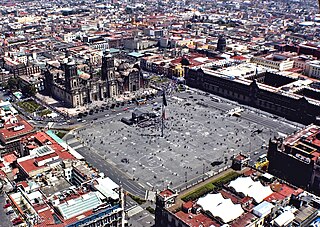
Zócalo is the common name of the main square in central Mexico City. Prior to the colonial period, it was the main ceremonial center in the Aztec city of Tenochtitlan. The plaza used to be known simply as the "Main Square" or "Arms Square", and today its formal name is Plaza de la Constitución. This name does not come from any of the Mexican constitutions that have governed the country but rather from the Cádiz Constitution, which was signed in Spain in the year 1812. Even so, it is almost always called the Zócalo today. Plans were made to erect a column as a monument to independence, but only the base, or zócalo, was built. The plinth was buried long ago, but the name has lived on. Many other Mexican towns and cities, such as Oaxaca, Mérida, and Guadalajara, have adopted the word zócalo to refer to their main plazas, but not all.
Sight 6: Catedral Metropolitana de la Ciudad de México
The Metropolitan Cathedral of the Assumption of the Most Blessed Virgin Mary into Heaven, also commonly called the Mexico City Metropolitan Cathedral, is the cathedral church of the Catholic Archdiocese of Mexico. It is situated on top of the former Aztec sacred precinct near the Templo Mayor on the northern side of the Plaza de la Constitución (Zócalo) in the historic center of Mexico City. The cathedral was built in sections from 1573 to 1813 around the original church that was constructed soon after the Spanish conquest of Tenochtitlan, eventually replacing it entirely. Spanish architect Claudio de Arciniega planned the construction, drawing inspiration from Gothic cathedrals in Spain.
Sight 7: Archivo de la Fotografía
The Museo Archivo de la Fotografía is a museum in the Historic center of Mexico City located in "La Casa de las Ajaracas", built at the end of the 16th century, at Guatemala street #34. The museum is dedicated to the conservation, research and distribution of photography.
Sight 8: Museo Templo Mayor
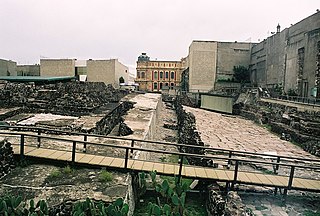
The Templo Mayor Museum is located in the Historic Center of Mexico City, Mexico. The objective of the museum is to publicize the findings found within the framework of the on-site research that is carried out in the archaeological zone of the Templo Mayor of the Mexica.
Sight 9: Templo Mayor
Get Ticket*The Templo Mayor was the main temple of the Mexican people in their capital city of Tenochtitlan, which is now Mexico City. Its architectural style belongs to the late Postclassic period of Mesoamerica. The temple was called Huēyi Teōcalli in the Nahuatl language. It was dedicated simultaneously to Huitzilopochtli, god of war, and Tlaloc, god of rain and agriculture, each of which had a shrine at the top of the pyramid with separate staircases. The central spire was devoted to Quetzalcoatl in his form as the wind god, Ehecatl. The temple devoted to Huitzilopochtli and Tlaloc, measuring approximately 100 by 80 m at its base, dominated the Sacred Precinct. Construction of the first temple began sometime after 1325, and it was rebuilt six times. The temple was almost totally destroyed by the Spanish in 1521, and the Mexico City Metropolitan Cathedral was built in its place.
Sight 10: Nuestra Señora del Pilar
La Enseñanza Church (1772-1778) is located on 104 Donceles Street in the historic center of Mexico City. The Mexican Churrigueresque style of this church, especially that of its altarpieces, is upheld as the pinnacle of the Baroque period in Mexico, as this style soon gave way to the Neoclassic shortly after this church was built. The church’s official name is Iglesia de Nuestra Señora del Pilar. The former convent was called El Convento de la Enseñanza La Antigua, from which is derived the church’s popular name. After the Reform War, the convent was disbanded. The complex has had various uses, but the church has been returned to its sacred function.
Sight 11: Museo de la Caricatura
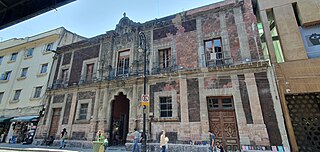
The Caricature Museum is located in an 18th-century Baroque building in the historic center of Mexico City. It was opened in 1987 to preserve and promote the history of Mexican cartooning, done for both political and entertainment purposes. The historic building it occupies was originally the home of Cristo College, a royal college established in 1612.
Sight 12: Teatro de la Ciudad Esperanza Iris
The Teatro de la Ciudad was built as the Teatro Esperanza Iris in 1918 and is now one of Mexico City’s public venues for cultural events. The theater is located in the historic center of Mexico City on Donceles Street 36.
Sight 13: Teatro Fru-fru
The Teatro Fru (Fru Theater) is a theater in Mexico City. It was inaugurated on January 1, 1899 under the name Teatro Renacimiento. In 1973 it was re-inaugurated with its current name. It is located at number 24 in the Donceles Street, in the Centro Histórico de la Ciudad de México
Sight 14: El Caballito
The equestrian statue of Charles IV of Spain is a bronze sculpture cast by Manuel Tolsá built between 1796 and 1803 in Mexico City, Mexico in honour of King Charles IV of Spain, then the last ruler of the New Spain. This statue has been displayed in different points of the city and is considered one of the finest achievements of Mr. Tolsá. It now resides in Plaza Manuel Tolsá.
Sight 15: Museo Nacional de la Estampa
The Museo de la Estampa is a museum in Mexico City, dedicated to the history, preservation and promotion of Mexican graphic arts. The word “estampa” means works in the various printmaking techniques which have the quality of being reproducible and include seals, woodcuts, lithography and others. The museum was created in 1986 and located in a 19th-century Neoclassical building located in the Plaza de Santa Veracruz in the historic center of the city. This building was remodeled both to house the museum and to conserve its original look.
Sight 16: Santa Vera Cruz
The Santa Veracruz Monastery in the historic center of Mexico City is one of the oldest religious establishments in Mexico City and was the third most important church in the area in the 16th century. It was established by a religious brotherhood founded by Hernán Cortés.
Sight 17: Chinatown
Barrio Chino is a barrio located in the downtown area of Mexico City, near the Alameda Central and Palacio de Bellas Artes. Barrio Chino exists primarily on two blocks along Dolores Street and one block east and west of the street. There was an expulsion of the ethnic Chinese in the 1930s and since then the ethnic Chinese have mixed and dispersed with the local population. According to the government of Mexico City, about 3,000 families in the city have Chinese heritage. In many parts of the older sections of the city, there are “cafes de chinos”, which are eateries that serve Chinese and Mexican food. The buildings in Barrio Chino are no different from the rest of the city, but businesses here are either restaurants or importers. Most of the shops and restaurants here had abundant Chinese-style decorations and altars, but statues of the Virgin of Guadalupe and San Judas Tadeo can be seen as well.
Sight 18: Palacio de Bellas Artes
Get Ticket*The Palacio de Bellas Artes is a prominent cultural center in Mexico City. This hosts performing arts events, literature events and plastic arts galleries and exhibitions. "Bellas Artes" for short, has been called the "art cathedral of Mexico", and is located on the western side of the historic center of Mexico City which is close to the Alameda Central park.
Sight 19: Palacio Postal
The Palacio de Correos de México, also known as the "Correo Mayor" is located in the historic center of Mexico City, on the Eje Central near the Palacio de Bellas Artes. It was built in 1907, when the Post Office became a separate government entity. Its design and construction was the most modern at the time, including a very eclectic style which mixed several different traditions, mainly Neo-Plateresque, into a very complex design. In the 1950s, the building was modified in a way that caused stress and damage, so when the 1985 earthquake struck Mexico City, it was heavily damaged. In the 1990s, restoration work has brought the building back to original construction and appearance.
Sight 20: Casa de los Azulejos
Get Ticket*The Casa de los Azulejos or Palacio de los Condes del Valle de Orizaba is an 18th-century Baroque palace in Mexico City, built by the Count of the Valle de Orizaba family. The building is distinguished by its facade, which is covered on three sides by blue and white colonial Talavera tiles from Puebla state. The palace remained in private hands until near the end of the 19th century. It changed hands several times before being bought by the Sanborns brothers who expanded their soda fountain/drugstore business into one of the best-recognized restaurant chains in Mexico. The house today serves as their flagship restaurant.
Sight 21: Iglesia de San Francisco
The Convent of San Francisco is located at the western end of Madero Street in the historic center of Mexico City, near the Torre Latinoamericana and is all that remains of the church and monastery complex. This complex was the headquarters of the first twelve Franciscan friars headed by Martín de Valencia who came to Mexico after receiving the first authorization from the Pope to evangelize in New Spain. In the early colonial period, this was one of the largest and most influential monasteries in Mexico City. It was built on the site of where Moctezuma II’s zoo once was. At its peak, the church and monastery covered the blocks now bordered by Bolivar, Madero, Eje Central and Venustiano Carranza Streets, for a total area of 32,224 square metres.
Wikipedia: Church of San Francisco, Madero Street, Mexico City (EN)
Sight 22: Templo Expiatorio de San Felipe de Jesús
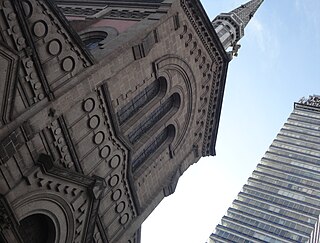
Templo Expiatorio Nacional de San Felipe de Jesús is an historic church in Mexico City, Mexico.
Wikipedia: Templo Expiatorio Nacional de San Felipe de Jesús (EN)
Sight 23: Palacio de Iturbide
The Palace of Iturbide is a large palatial residence located in the historic center of Mexico City at Madero Street #17. It was built by the Count of San Mateo Valparaíso as a wedding gift for his daughter. It gained the name “Palace of Iturbide” because Agustín de Iturbide lived there and accepted the crown of the First Mexican Empire at the palace after independence from Spain. Today, the restored building houses the Fomento Cultural Banamex; it has been renamed the Palacio de Cultura Banamex.
Sight 24: Museo del Estanquillo
The Museo del Estanquillo is located in the Historic Center of Mexico City, Mexico. The museum houses the personal collection of the writer Carlos Monsivais, encompassing paintings, photography, toys, albums, calendars, advertising and books.
Sight 25: Iglesia de la Profesa
The Church of San Felipe Neri, commonly known as "La Profesa", is a Roman Catholic parish church that was established by the Society of Jesus late in the 16th century as the church of a community of professed Jesuits. The church is considered to be an important transitional work between the more sober or moderate Baroque style of the 17th century and the extremely decorated manifestations of the Baroque of the 18th century in Mexico.
Sight 26: Iglesia de Jesús Nazareno
The Church of Jesus Nazareno is a Catholic temple located in the Historic Center of Mexico City, in the Cuauhtémoc mayor's office and was built in the seventeenth and eighteenth centuries, with modifications in the nineteenth century. It is attached to the hospital of the same name and is characterized by housing the apocalypse mural of José Clemente Orozco, the remains of Hernán Cortés and the façade of the first Cathedral of Mexico which dates from the end of the sixteenth century and is one of the few construction elements of that century that are preserved in the historic center of the city. The temple was declared a historical monument on August 29, 1932.
Wikipedia: Iglesia de Jesús Nazareno (Ciudad de México) (ES)
Sight 27: Museo de la Ciudad de México
The Museum of Mexico City is located at Pino Suarez 30, a few blocks south of the Zocalo, on what was the Iztapalapa Causeway, near where Hernán Cortés and Moctezuma II met for the first time. This building used to be the palace of the Counts of Santiago de Calimaya, who were the descendants of one of the conquistadors with Cortés. The house was extensively remodeled during the colony to much the appearance that it has today and remained in the family until 1960, when the Mexico City government acquired it from them in order to found the Museum that is found there today. The museum contains a number of elements of the old palace as well as 26 rooms dedicated to the history and development of Mexico City from Aztec times to the present. It also contains a library and the studios of painter Joaquín Clausell, who lived here in the late 19th and early 20th centuries.
Sight 28: Museo de la Charrería
The Museo de Charrería or Charrería Museum is located in the historic center of Mexico City on Izazaga Street, in an old monastery which was dedicated to the Virgin of Montserrat. The monastery closed in 1821 and the building deteriorated significantly, until it was decided to rehabilitate it as a tourist attraction. The purpose of the museum is to preserve and promote the sport and tradition of the charreada with both the museum's permanent display of art and handicrafts as well as outreach programs.
Share
How likely are you to recommend us?
Disclaimer Please be aware of your surroundings and do not enter private property. We are not liable for any damages that occur during the tours.
GPX-Download For navigation apps and GPS devices you can download the tour as a GPX file.
